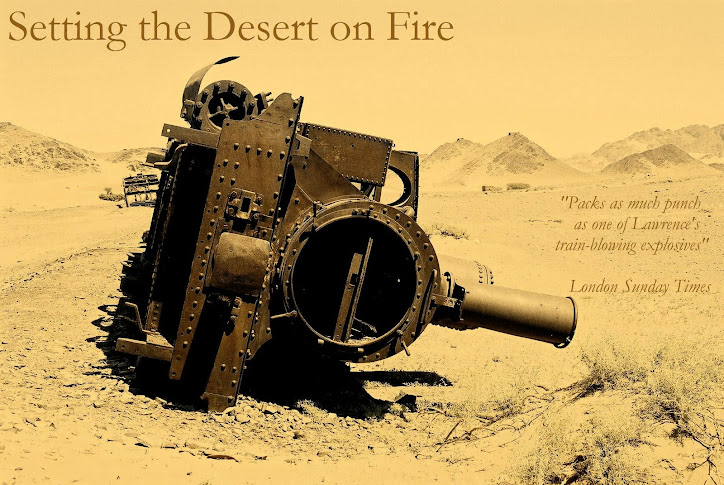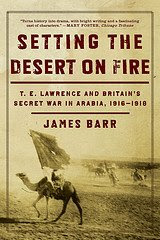I've just finished reading Desert of Death by Leo Docherty. Docherty, a former Scots Guards officer, left the army after criticising British tactics in southern Afghanistan. The short book, which fleshes out his argument, covers episodes from his tour in Iraq and a few weeks at the very start of the campaign in Helmand before he left the army. He left just as the violence erupted there last June and he documents the uneasy "peace" and tensions in the market town of Sangin on the Helmand river just beforehand. Although he says on the dustjacket that he's "not a journalist or a writer", this turns out to be rubbish, because he writes well and has a sharp eye for telling detail. What is clear is the sense of powerlessness of the British soldiers in Sangin at that time. With no Foreign Office or DFID support they are unable to promise anything by way of the reconstruction which was the strategic cornerstone of the British deployment.
The problem arose from the departure from the original "inkspot" plan which aimed to use the limited British resources to achieve proper security in the area immediately around the provincial capital Lashkar Gah and deliver reconstruction that would become the envy of people living in the surrounding area. With public opinion behind the British presence, the strategy ran, the inkspot would gradually grow. However, the provincial governor ordered the dispersal of British forces to support his local administrators around the province. Now isolated and vulnerable to attack, the British have had to rely increasingly on heavy firepower - either artillery or aerial support from bombers and Apache attack helicopters - to defend themselves. As Docherty points out, even when used carefully these are "blunt edged, indiscriminate weapons that have "killed numerous civilians".
All this makes the Sunday Telegraph's report at the weekend all the more disturbing. It described "a new, aggressive, approach adopted by American forces in southern Afghanistan and particularly in Helmand" involving the Apache helicopters. One American pilot is quoted saying: "The Brits are good but they don't have the extreme aggression that we do." The pilots admit that their speed and the intensity means that there is little time to separate the enemy from the local inhabitants who are, as Docherty extremely difficult to identify. "The enemy cannot simply be described as 'Taliban'", he writes, "A Helmand poppy farmer can hang up his hoe over lunchtime, pick up his Kalashnikov, shoot at the British and be back in the fields for the rest of the afternoon. The farmer has nothing ideologically in common with the Taliban but they may share a common aim, for example the absence of foreign troops, for different motives." That distinction is lost on the US Apache pilots. "When you are on top of the enemy you look, shoot and it's, 'You die, you die, you die'", says another quoted in the Telegraph. So much for reconstruction.
Tuesday, May 01, 2007
Desert of Death
Labels:
Desert of Death,
Helmand,
Leo Docherty,
Operation Herrick
Subscribe to:
Post Comments (Atom)



No comments:
Post a Comment